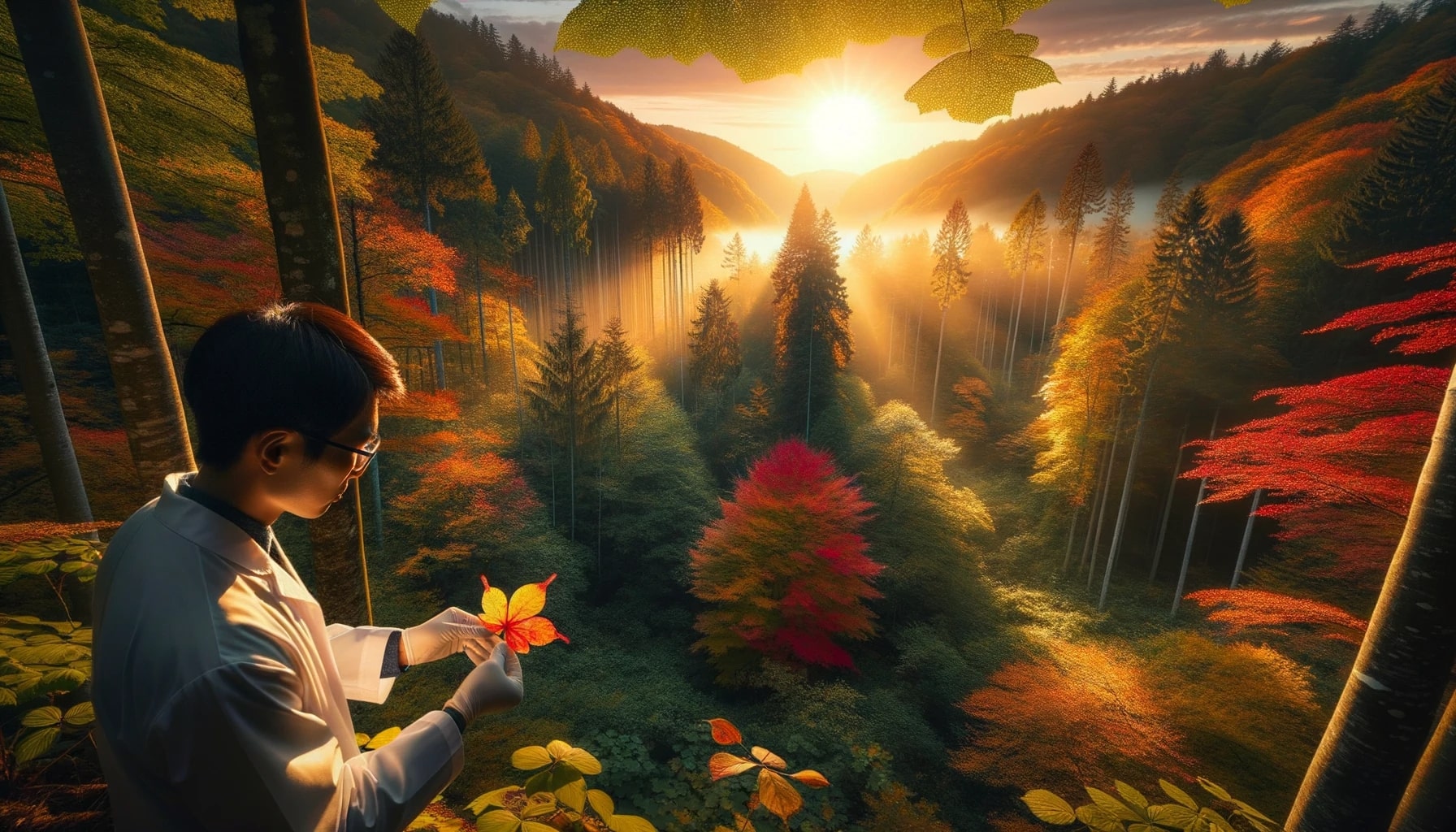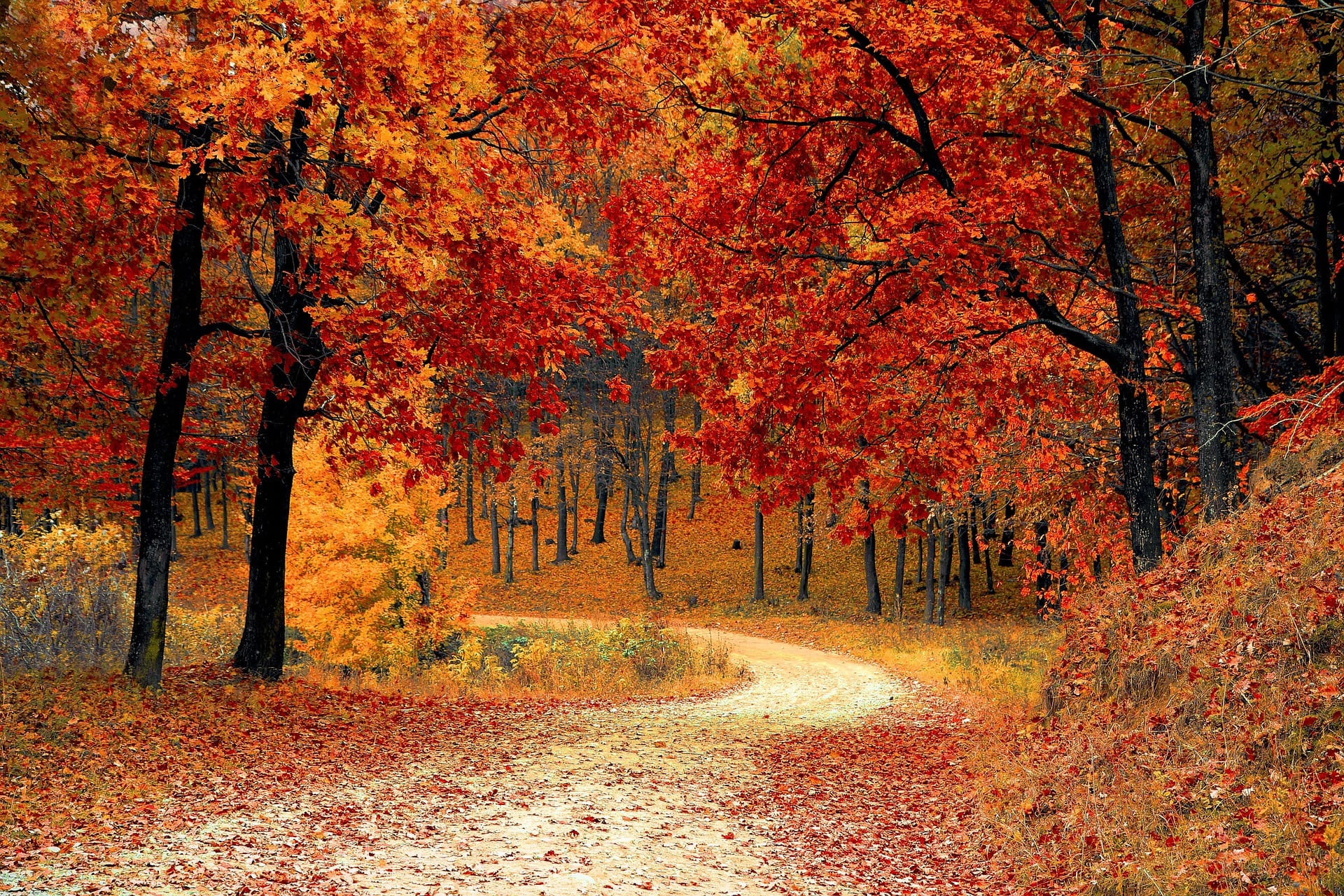As summer fades into autumn, nature puts on a spectacular display of color. Tree leaves display a vibrant range of colors including red, orange, and yellow. that adorn trees during the fall season are a captivating sight. But what causes this remarkable transformation, and what is the science behind fall tree foliage? To unravel this mystery, we must delve into the intricate processes that take place within trees during this season.

The Chemistry of Color
At the heart of the science behind fall tree foliage lies the chemistry of pigments. Trees produce various pigments that give leaves their distinct colors. The most important pigments responsible for the vibrant hues of fall foliage are chlorophyll, carotenoids, and anthocyanins.
Chlorophyll:
During the spring and summer, leaves are rich green, thanks to the dominant pigment chlorophyll. Chlorophyll is essential for photosynthesis, the process by which plants convert sunlight into energy using carbon dioxide and water. It absorbs light in the blue and red parts of the electromagnetic spectrum while reflecting green light, giving leaves their characteristic color.
Carotenoids:
Alongside chlorophyll, carotenoids play a vital role in photosynthesis. However, their colors are masked by the green of chlorophyll during the growing season. As the days grow shorter and temperatures drop in the fall, chlorophyll production in leaves decreases. As chlorophyll breaks down and is not replenished, the carotenoids become more visible. Carotenoids are responsible for the yellow and orange hues in many fall leaves. Common carotenoids include beta-carotene (which gives carrots their orange color) and lutein (found in green leafy vegetables).
Anthocyanins:
Unlike chlorophyll and carotenoids, anthocyanins are not present in leaves year-round. Instead, they are produced in response to specific environmental cues. Anthocyanins are responsible for the striking red and purple colors seen in some fall leaves. Their production is triggered by a combination of factors, including cool temperatures, bright sunlight, and genetics. Anthocyanins act as a protective mechanism for leaves, helping to ward off potential damage from excessive sunlight and providing a competitive advantage to the tree.
Environmental Factors and Leaf Color
The timing and intensity of fall foliage are influenced by several environmental factors:
Day length:
As autumn approaches, the length of daylight hours decreases. This reduction in daylight triggers changes in the trees’ physiology, leading to the breakdown of chlorophyll and the unmasking of other pigments.
Temperature:
Cooler temperatures in the fall also contribute to the transformation of leaves. Cold nights followed by warm, sunny days are ideal for the production of vibrant fall colors. The cool nights cause sugars to become trapped in the leaves, leading to the production of anthocyanins.
Moisture:
Adequate soil moisture throughout the growing season and early fall can enhance the intensity of fall colors. Drought stress can lead to early leaf drop or less vibrant colors.
Nutrient Availability:
The availability of nutrients, particularly nitrogen, plays a role in the coloration of fall foliage. A lack of nitrogen can result in more intense red and purple colors due to increased anthocyanin production.
The Role of Genetics
The genetics of a tree species also influence the colors it displays during the fall. Different species have varying abilities to produce and retain pigments. For example, sugar maples are renowned for their brilliant orange and red fall foliage, while oak trees often exhibit more subdued brown colors
Within a single species, individual trees may also exhibit variations in color due to genetic diversity. This diversity can be seen in the same forest where one tree may display vivid red leaves while another of the same species nearby may have primarily yellow foliage.
The Process of Senescence
Fall foliage is not only about the production of new pigments but also the gradual decline of the leaf itself. This process is called senescence. As trees prepare for the winter months, they reabsorb nutrients from their leaves, such as nitrogen and phosphorus. These nutrients are transported back into the tree’s branches and trunk, where they are stored and will be used to support new growth in the spring.
As nutrients are withdrawn from the leaves, the chlorophyll breaks down and disappears. Without the green chlorophyll pigment masking them, the carotenoids and anthocyanins become more prominent, and the leaves display their autumn colors. During senescence, the cells in the leaf begin to deteriorate, and the leaf eventually falls from the tree.
The Role of Weather and Geography
The timing and intensity of fall foliage can vary widely depending on the region and the weather in a given year. In northern regions, where temperatures drop earlier in the fall, the change in leaf color typically occurs earlier than in southern regions. Additionally, extreme weather events such as drought, unseasonably warm temperatures, or early frost can impact the duration and quality of fall foliage.
Weather patterns throughout the year also affect the vibrancy of fall colors. A warm, wet spring followed by a cool, sunny autumn tends to produce the most vivid and long-lasting fall foliage.
Leaf Peeping and Tourism
The stunning spectacle of fall foliage draws visitors from near and far to witness the vibrant colors of autumn. This phenomenon, known as “leaf peeping,” has become a significant tourism industry in many regions with notable fall foliage displays, such as New England in the United States, Japan, and parts of Europe.
Leaf peeping not only benefits local economies but also fosters an appreciation for nature’s beauty and the importance of conserving forests. It serves as a reminder of the interconnectedness of ecosystems and the delicate balance between environmental factors, genetics, and chemistry that give rise to the breathtaking colors of fall foliage.
The Impact of Climate Change
While fall foliage is a beloved seasonal phenomenon, it is not immune to the effects of climate change. Rising global temperatures and shifting weather patterns can disrupt the delicate balance of factors that contribute to vibrant fall colors.
Warmer temperatures can delay the onset of fall foliage, as trees may continue to produce chlorophyll for longer periods. Additionally, increased drought and extreme weather events can stress trees, potentially leading to premature leaf drop or less vibrant colors.
Furthermore, climate change can also affect the distribution of tree species. Some species may no longer thrive in their current locations, impacting the availability and diversity of fall foliage displays in certain regions.
In conclusion, the science behind fall tree foliage is a fascinating blend of chemistry, biology, genetics, and environmental factors.
The brilliant colors of autumn leaves are a testament to the intricate processes that take place within trees as they prepare for the winter months. As we enjoy the beauty of fall foliage, it’s essential to recognize the fragility of this natural spectacle and the potential impact of climate change on its future. By understanding the science behind it, we can better appreciate and protect this cherished seasonal phenomenon.


